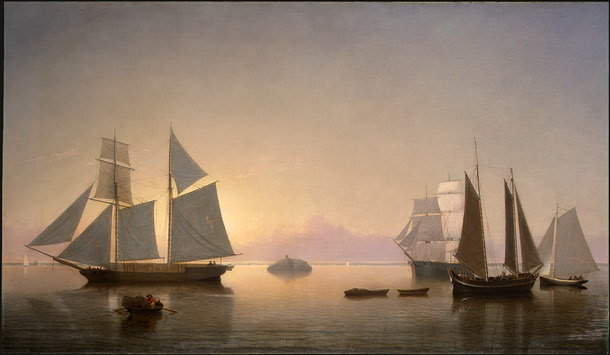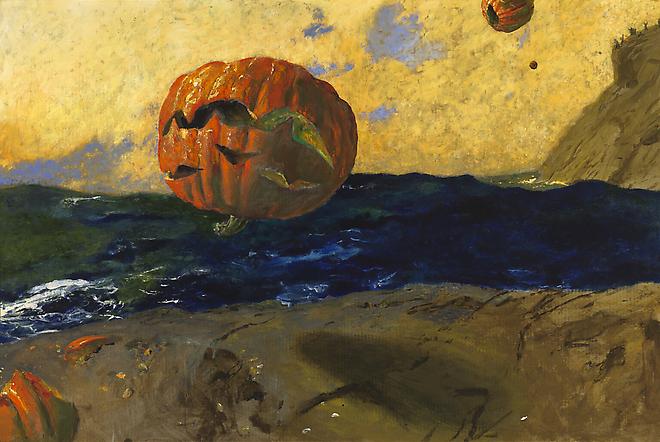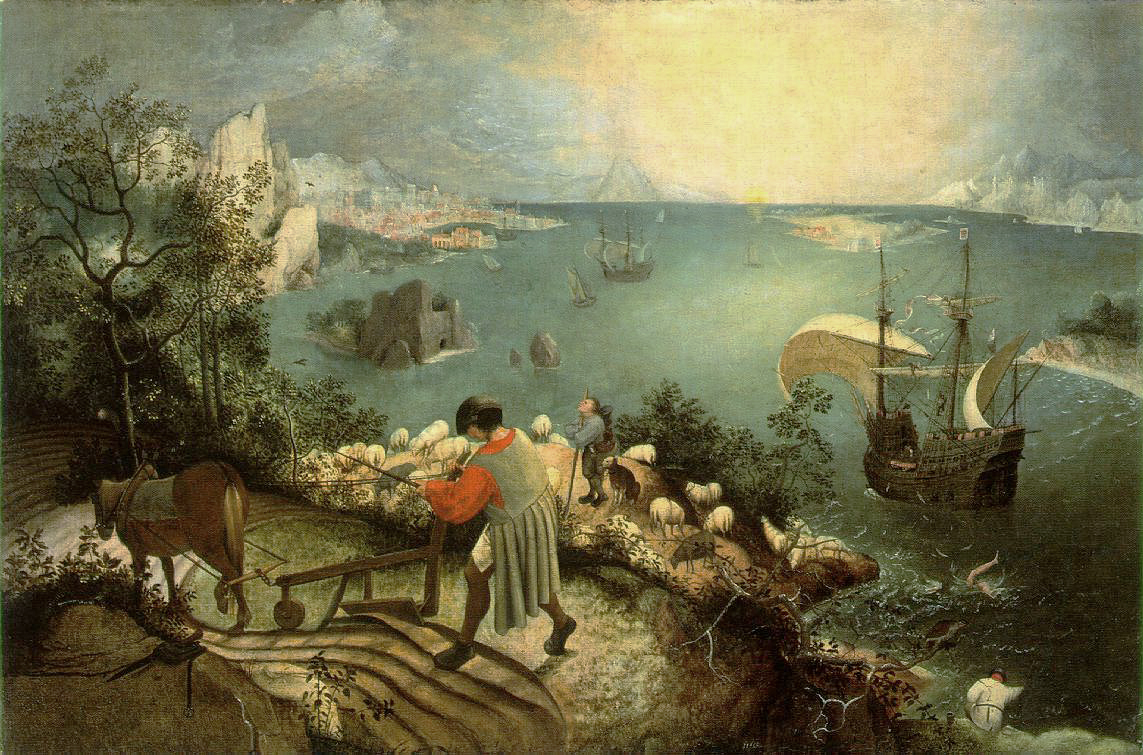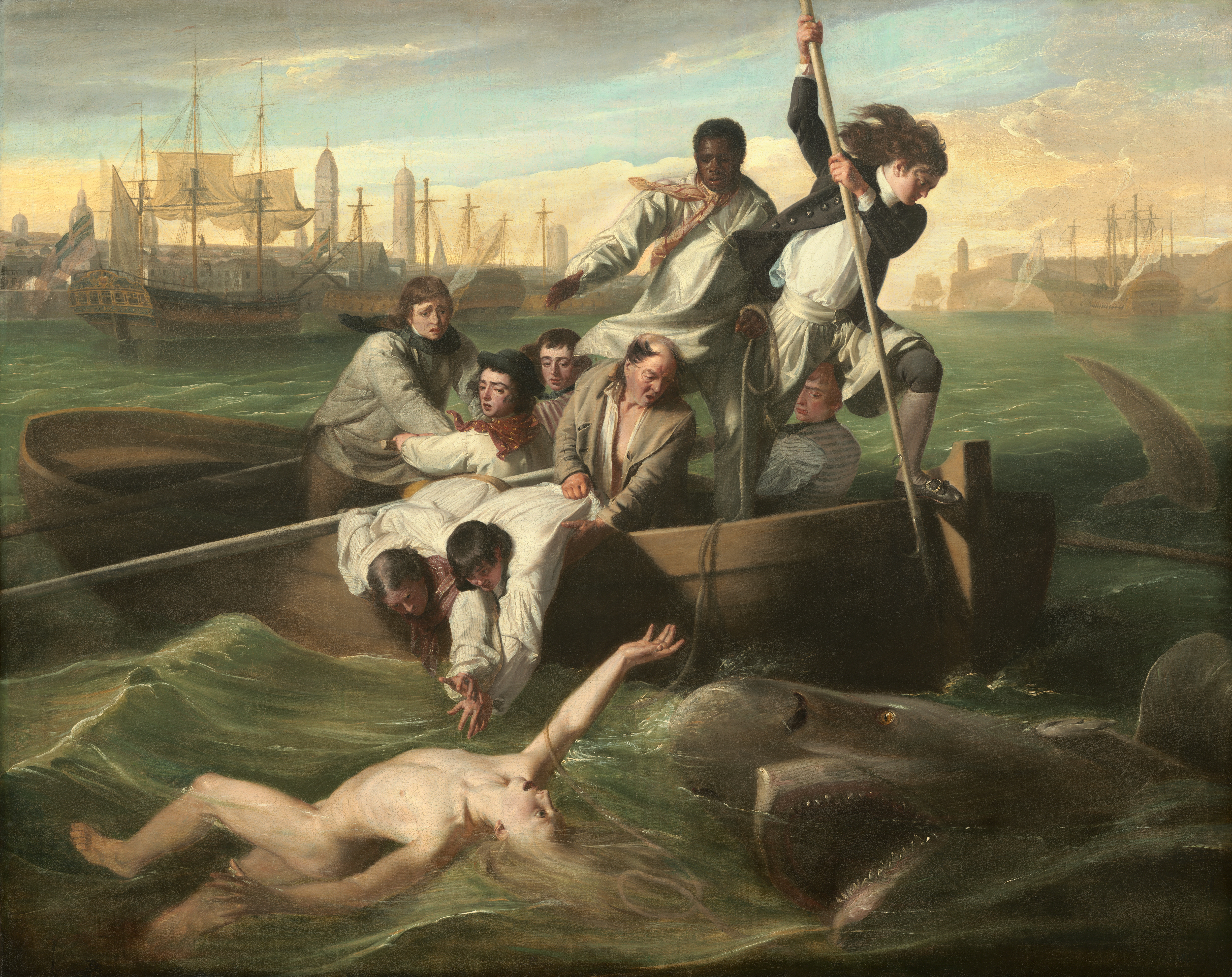A recent Guardian columnsought to identify the ten best sea pictures of all time. I propose an alternative list, not the “best”—because the idea of “top ten paintings” is in itself ridiculous—but ten equally brilliant and perhaps less famous seascapes, here presented in no particular order. (My apologies to Turner and Monet; I only omitted them because everyone knows they’re brilliant.)
Have you any to add to this list?
 |
|
Fitz Hugh Lane, Becalmed Off Halfway Rock (Casco, ME), 1860
|
Fitz Hugh Lane painted a narrow repertoire—ships and the ocean—but he perfectly captured the atmospherics of the sea. Long after the fact, he and his contemporaries would be lumped together as “luminists.” It’s a good description of Lane’s aerial perspective on tranquil, hazy days.
 |
| Frederic Edwin Church, The Icebergs, 1861 |
Frederic Edwin Church is also called a luminist, but he’s very different from Lane in that his compositions are never tranquil. He was one of the first artists who actually traveled to see what he was painting.
The Icebergs was done in studio from sketches he made during a one-month schooner cruise through the North Atlantic. (A painting which mines the same material but is stylistically different is Caspar David Friedrich’s
The Sea of Ice. Note that both include broken boats, symbolising the reaches of man’s endeavors.)
 |
| Richard Diebenkorn, Seawall, 1957 |
A first-generation Bay Area Figurative painter, Richard Diebenkorn moved from abstract expressionism to figurative painting back to abstract expressionism. His ability to simplify his paintings into brilliant, recognizable parts simply amazes me.
 |
| Jamie Wyeth, Smashing Pumpkins, Monhegan, 2007 |
Like the writer Haruki Murakami, Jamie Wyeth can make you simultaneously marvel at his technique and laugh out loud. When I saw this painting in person, I boggled at how convincing the water is; that is somewhat lost in this rendering.
 |
| Joaquín Sorolla, Bulls in the Sea, 1903 |
There is another version of Joaquin Sorolla’s Bulls in the Sea at the Hispanic Society in New York that I actually like better for its composition. But I can’t find a well-lighted version online. (No surprise there; the Hispanic Society gallery isn’t well lighted, either.)
Sorolla painted countless paintings of the sea, and it’s tough to choose a favorite. Work, play, child, adult, misery, fun—he catalogued it all. But I think I love these paintings as much for the sails as for the bulls.
 |
| Pieter Bruegel the Elder, Landscape with the Fall of Icarus, c. 1558 |
Pieter Bruegel the Elder’s “Icarus” has to be the seascape about which the most poetry has been written. “Landscape With the Fall of Icarus” by William Carlos Williams is
here, and W.H. Auden’s “Musee des Beaux Arts” is
here. Both are wonderful.
The painting employs Bruegel’s signature move: the most important part of the painting takes place in a relatively inconspicuous corner of the canvas.
 |
| Frank Carmichael, The Bay of Islands, 1931 |
Canada has more coastline than any other nation in the world (265,523 km) so it stands to reason that their Group of Seven painters made a lot of pictures of it. The Great White North is inseparable from the sea. I adore the Group of Seven, so I’ll give you two of them, including Frank Carmichael, above.
 |
|
Lawren Harris, Off Greenland, Arctic Sketch XIX, 1930
|
Lawren Harris’ plein air field sketch, above, sold in 2011 for a whopping $1.77 million Canadian. (Gotta love that!) Like Rockwell Kent, Harris’ seascapes are deceptively simple.
 |
|
John Singleton Copley, Watson and the Shark, 1778
|
John Singleton Copley never visited Havana and probably never met a shark (seeing as this one has lips). But this commemorative painting—commissioned by Brook Watson, the shark attack victim—is compelling in its sheer liveliness. The young Watson was not rescued until the third try. He lost his leg in the attack. I bet he dined out on that story for the rest of his life.
 |
| Édouard Manet, Moonlight over the Port of Boulogne, 1869 |
Édouard Manet is another artist who frequently painted the sea. Would the stars indeed have been this bright in a port city in 1869? Does it matter?
I’m off to the sea myself in the morning, to teach the second of my Maine workshops. If you’re signed up for my July workshop in mid-coast Maine, you can find the supply lists here. There’s one more residential slot left; I’m dying to know who is going to fill it. August and September are sold out , but there are openings in October! Check here for more information.












